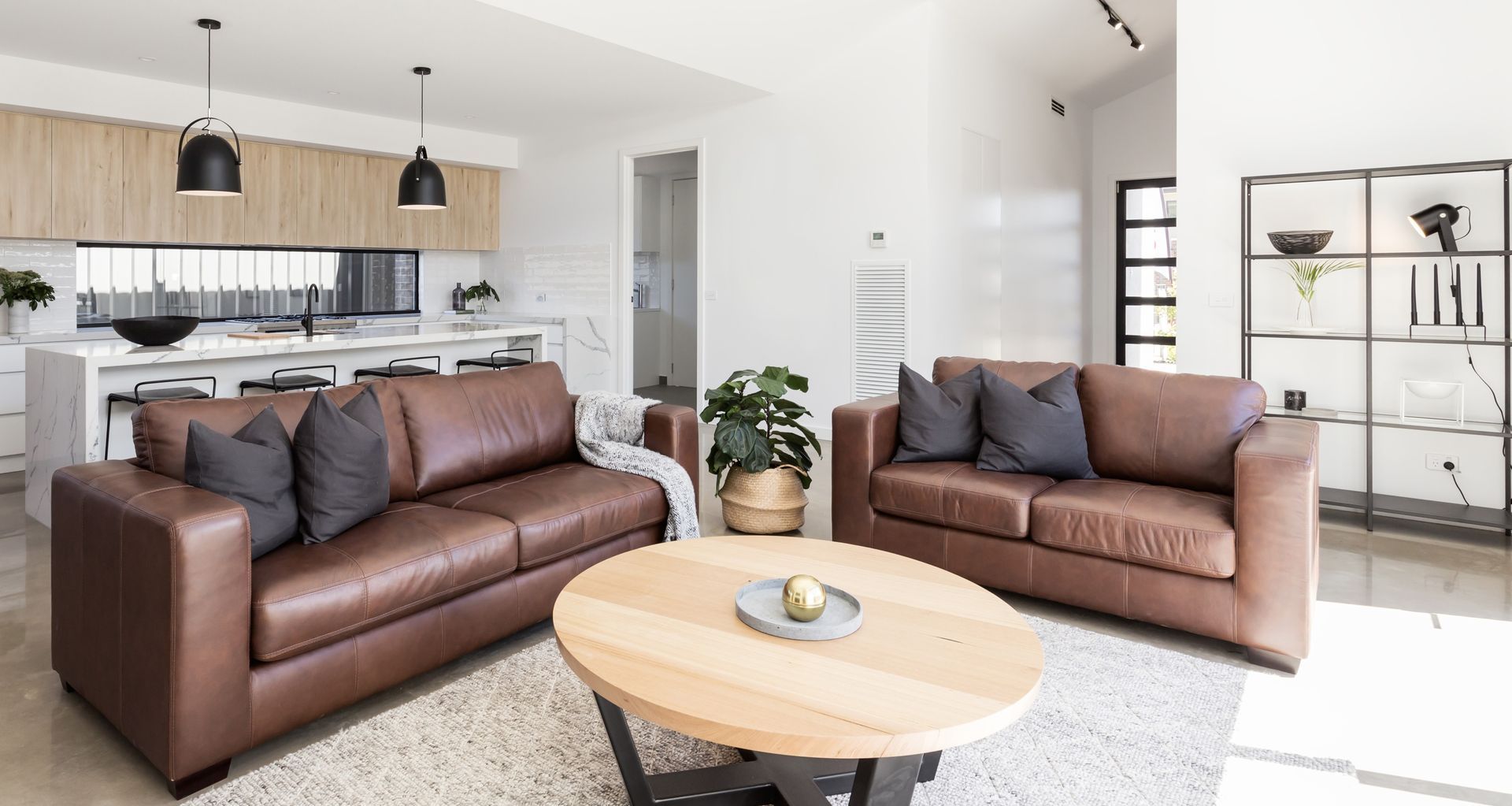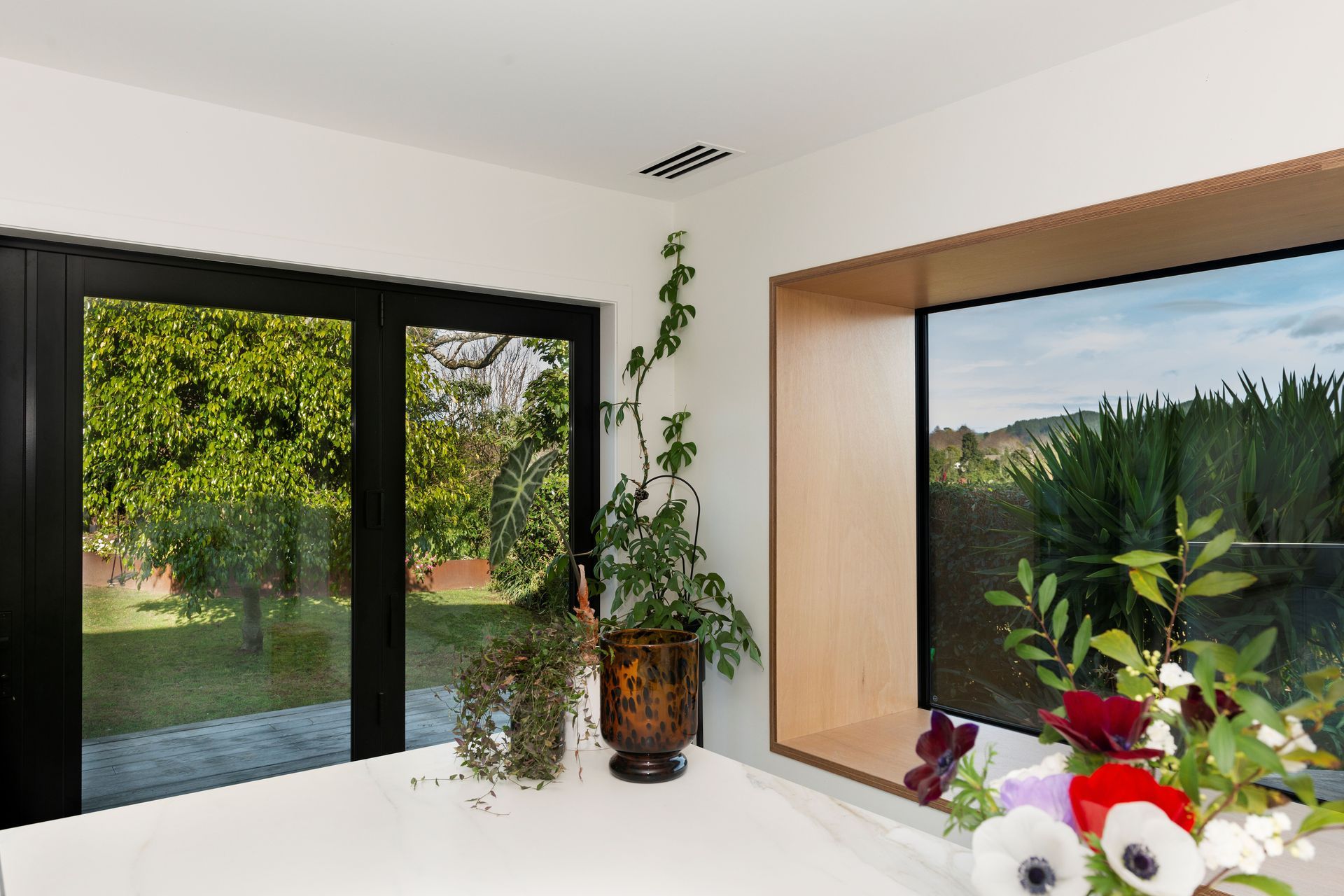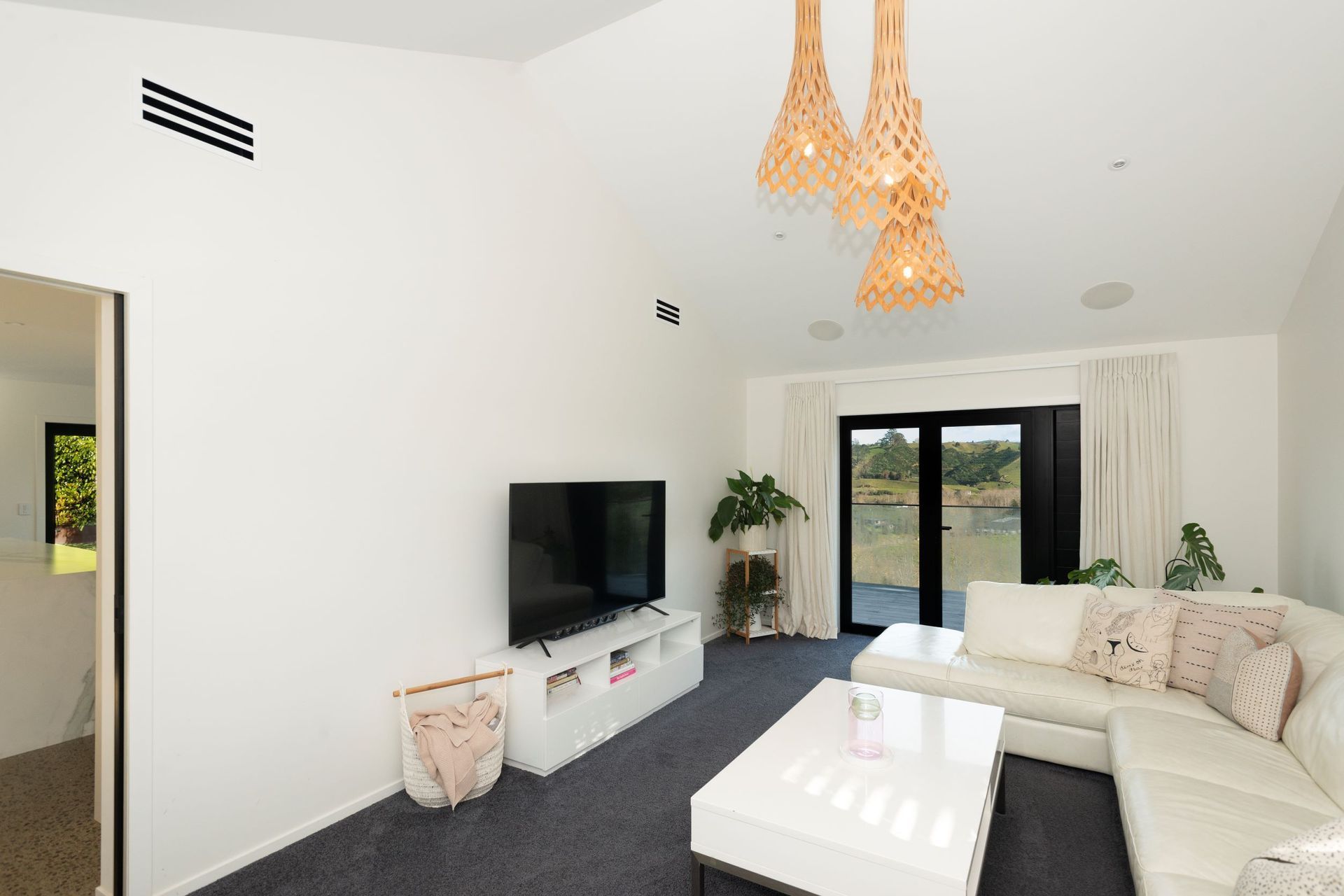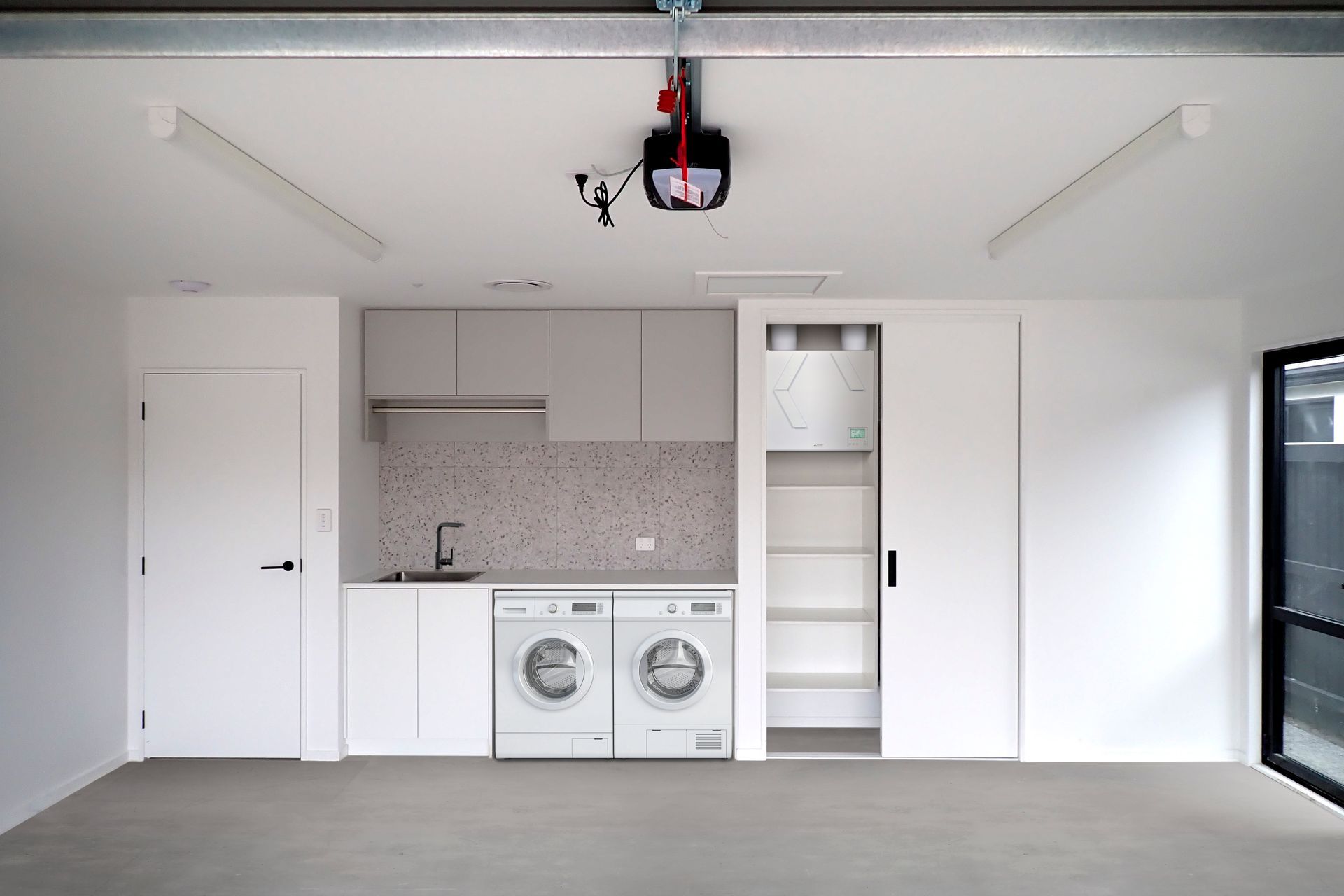The designer’s guide to heat recovery ventilation: the secret to invisible comfort
Written by
17 August 2025
•
5 min read

Why ventilation starts at concept stage
Today’s airtight homes excel at efficiency and quietness, but can trap moisture and stale air. Opening a window isn’t always practical when noise, pollen, or security are concerns and particularly in winter, when it means valuable heat is lost to the outdoors.
“There’s a building awareness being driven by an underlying need for ventilation,” says Blair, Mitsubishi Electric ’s Divisional Manager for Domestic and Light Commercial HVAC. “New homes are now more thermally efficient and airtight, which can lead to moisture challenges and air quality issues. Naturally, ventilation has become an option that removes part of those challenges. “Homeowners realise that they need a source of fresh air in their home, and this is why mechanical ventilation has come to the forefront for new homes. Equally, occupants of existing homes are becoming more aware of the health benefits of ventilation – both for them, and their home." Blair Mills.
Ventilation systems help maintain the longevity and quality of one of people’s biggest assets: their home.
What homeowners value most
- Cleaner air: Continuous, filtered ventilation keeps windows dry and mould at bay.
- Protected finishes: Reduces hidden moisture damage.
- Lower heating or cooling bills: “You’re recovering the energy you’ve already spent, instead of losing it out the window,” says Blair.
- Quiet luxury: Fresh air is felt, not heard.
“One of the biggest issues when ventilation isn’t considered is crying window syndrome,” says Blair. “More serious issues can arise, such as hidden moisture in walls and furnishings, which can lead to mould and health issues. Plus, damp air is harder and more expensive to heat.”

Introducing Lossnay Mechanical Ventilation with Heat Recovery
Mitsubishi Electric’s Lossnay Fresh Air Heat Recovery Ventilation (HRV) Systems do more than just improve indoor air quality – they help create a healthier, drier, and more comfortable home while reducing energy costs.
A Lossnay HRV system pre-warms or pre-cools incoming air using the energy in outgoing air. If it’s 8°C outside and 21°C inside, the system lifts the temperature partway before your heating takes over, reducing running costs without draughts.
“Heat recovery ventilation is ultimately going to help someone save money on what they would otherwise have had to spend on heating and cooling,” explains Blair. “They are recovering the energy or cost that they’ve already used to heat or cool their space at the same time as bringing that fresh air in, whereas if it’s just opening the window, you’re simply letting all of that energy cost go out the window.
“Now with optional Wi-Fi Control, you can see exactly how much the system is pre-warming or pre-cooling incoming air through the Mitsubishi Electric App, so you feel and see the Lossnay difference.”

The two pathways for premium homes
1. Whole-home ducted system interlocked with Lossnay HRV
For clients wanting seamless, ducted heating and cooling, allow for ceiling or roof space from the outset. A coordinated layout that interlocks the ducted system with a Mitsubishi Electric Lossnay HRV ensures balanced airflow, quieter operation, and lower running costs.
- Allow space for duct runs.
- Provide accessible filter locations.
- Place intakes/exhausts discreetly.
2. Statement Ceilings Without Roof Space for HRV units
Homes with raked ceilings, exposed beams, or minimal ceiling voids can still achieve premium comfort.
“In the past, ceiling space was essential for ventilation,” Blair explains. “Now, Mitsubishi Electric offers vertical and wall-mounted models that work without a roof cavity – designers just need to plan unit placement early, often in a garage or laundry.”
Pair multi-room heat pumps with a Lossnay Vertical Series unit placed in a utility space, with short duct runs to key living and sleeping areas. For targeted needs, single-room Lossnay units are ideal for spaces like studies, home offices, or sleepouts.

Quick-spec checklist for architects
- Select the strategy early: Ducted whole-home heating and interlocked Lossnay HRV, or multi-room heat pumps and ceiling-space-free Lossnay HRV.
- Reserve space for the unit and duct runs with filter access.
- Consider airflow design: consider what zones require coverage, and the placement of supply/extract for even airflow, maximising comfort.
- Position intake/exhaust points discreetly and away from contaminants.
- Manage acoustics with smooth duct runs and attenuation near quiet rooms.
- Specify control integration and Wi-Fi Control access for user visibility.
- Align grille placement with lighting and ceiling design.
- Ensure service access for maintenance and filter changes.
The bottom line
Interiors can often be designed and built without considering where the heat recovery ventilation system will go, leading to difficulty in housing the indoor unit.
“Engaging early in the design phase is important to not only make sure there is space for the system, but also for the duct to flow to effectively ventilate the home.”
Whether it’s a fully ducted system for a clean, minimalist design or a statement ceiling that offers limited voids for utilities, there’s a Lossnay solution to match the architecture. The key is to plan ventilation early, coordinate space and controls, and then let heat recovery do the heavy lifting, so your clients enjoy fresh air, quiet rooms, and lower energy bills without compromising the design.
Explore the full Lossnay range and find the right solution for your home.